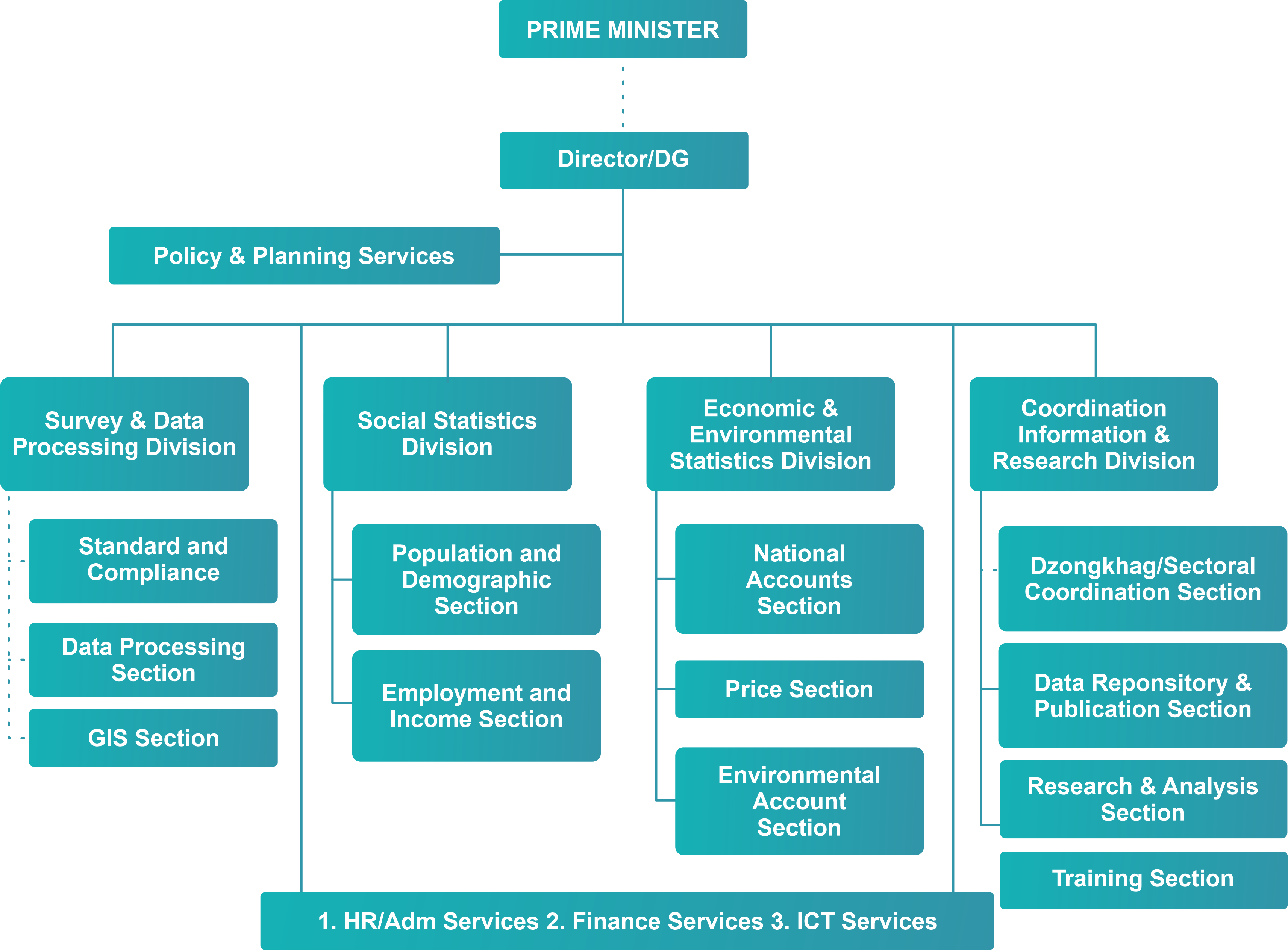13.2 Workforce (Staff composition) of an NSO#
The statistical system’s human resources-the people working for all entities and organizations producing official statistics, their skills and expertise - are the most valuable and often the scarcest resource. The workforce of a modern NSO needs a wide range of skills and competencies to effectively carry out its functions. The requirements for human resources of an NSO are determined by its legislated and programmatic mandates and functions.
A strategic plan and a multi-annual work plan set out what the NSO needs to do. The determination of planned activities and expected outputs is guided by its vision, mission, and strategic goals identified and renewed over time.
13.2.1 NSO functions#
The core functions of an NSO (refer to Chapter 4.3.4 — National statistical office layout the core knowledge, skills and competencies that its workforce would need to have:
Ensuring continuity of production and dissemination of all statistics under its responsibility.
Providing an effective performance of the system-wide functions such as setting standards, planning, coordination of the national statistical system, and statistical registers, which includes the responsibility of the NSO to provide services for other producers (e.g., sampling).
Ensuring quality and efficiency of the production and dissemination processes, based on using the best-suited methods and technology, carrying out research to enhance quality and effectiveness, applying standards-based modernisation and innovation models such as GSPBM, GAMSO or and CSPA.
Developing and maintaining networks with the various user groups to assess the relevance and respond to changing and emerging information needs.
Ensuring trust of users, respondents and data providers in its institutional quality, and in the integrity of the whole national statistical system, through regular monitoring of adherence to the United Nations Fundamental Principles of Official Statistics (UNFPOS) or equivalent lists of principles across the whole national statistical system.
Contributing substantively to discussions in international forums (expert groups, standards-setting, framework development, technical conferences, etc.) of official statistics.
The core, current and planned activities, targets and schemes of service determine the number of people, the workforce plans and how the work is to be organized. In this Chapter, the workforce composition is described, assuming that the NSO organizational structure is a vertically centralized one—with a central office and geographically dispersed sub-national offices. And the ability to meet new demands for NSO products and services may require the ability to change how it conducts its business.
13.2.2 Workforce Composition#
The organizational charts for Bhutan, shown in Figure 13, suggest that workforce needs of a national statistical office–whether large or small, developed or developing–are largely functionally similar. The differences would be in the number of staff and their skills and competencies.
Using the UNECE Classification of Statistical Activities (🔗), the functional composition of an NSO workforce as highlighted in the charts are:
Strategic and managerial issues of official statistics: Statistical programmes; coordination within the statistical system; management and development of human resources; management and development of technological resources.
Subject matter expertise: Demographic and social statistics; economic statistics; environment and multi-domain statistics.
Methodology of data collection, processing, dissemination and analyses: Data sources (Census, registers and surveys); data processing; dissemination; data analysis.
It is to be noted that the illustrative organizational charts do not explicitly reflect the functions of coordination of international statistical work and technical cooperation. Typically, the function is carried out by a unit of the office of the chief statistician.

Fig. 16 Illustrative NSO organization chart - National Statistics Bureau of Bhutan
Source: Adapted from https://www.nsb.gov.bt/about/organogram/#
Owing to the evolving range of subjects covered by a modern NSO, the staff tends to possess various skills and varying backgrounds. Even agencies that conduct only moderately complex and specific statistical undertakings find themselves in need of a wide range of skills. Statistical operations require a mix of talent apart from statisticians and data scientists, including economists, sociologists, psychologists, demographers, econometricians, model builders, geographers, information technology experts, accountants, etc.
It is important to build and maintain a multi-talented staff with a broad range of academic, technical and managerial skills and work experience. Professional staff can often be divided into two categories:
General personnel performing at various levels of sophistication in informatics; statistical design and analysis; national, public sector or enterprise accounting; and economic, social or demographic analysis.
Specialized personnel capable of performing at a substantially high level in an area such as non-response analysis; applications of geospatial information; access and use of Big Data; data integration.
In addition to the technical know-how, staff also take on managerial responsibilities (heads of organizational units; e.g., as shown in the organizational charts).
